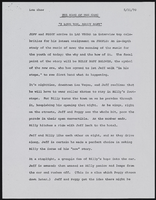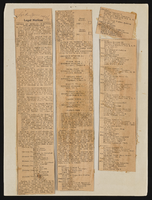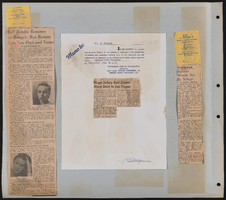Search the Special Collections and Archives Portal
Search Results
University of Nevada, Las Vegas Web Archive
Identifier
UA-00053
Abstract
The University of Nevada, Las Vegas (UNLV) Web Archive represents archived websites that are part of the unlv.edu domain that have been collected since 2013. Websites in this collection represent all academic functions of UNLV including colleges and departments, the University Libraries, museums, undergraduate and graduate colleges, and course catalogs. Other websites represented in this collection include UNLV Athletics, research centers, campus directories, UNLV News Center, and the UNLV President's website.
Archival Collection
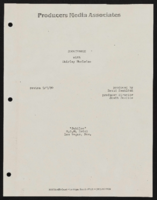
Jubilee!: television documentary script for Showchange with Shirley Maclaine
Date
1980-09-01
Archival Collection
Description
Series 3: Shows -- Subseries 3.3 United States -- Las Vegas and Reno
Text

Meeting minutes for Consolidated Student Senate, University of Nevada, Las Vegas, October 15, 2007
Date
2007-10-15
Archival Collection
Description
Includes meeting agenda. CSUN Session 37 Meeting Minutes and Agendas.
Text
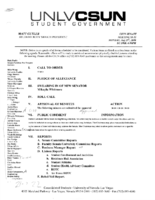
Meeting minutes for Consolidated Student Senate, University of Nevada, Las Vegas, August 25, 2008
Date
2008-08-25
Archival Collection
Description
Includes meeting agenda. CSUN Session 37 Meeting Minutes and Agendas .
Text
Pagination
Refine my results
Content Type
Creator or Contributor
Subject
Archival Collection
Digital Project
Resource Type
Year
Material Type
Place
Language
Records Classification

